Copper - Something New Under the Sun?
Copper Applications in Innovative Technology
U.S. Patents | Worldwide Patents | GB Patents | Patents from other European Countries | Japanese Patents | Summary
You may be forgiven for thinking that, because copper is such an ancient metal, there wouldn't be anything left to discover about it. And, you might think that all the applications for copper and its alloys would have been picked clean by now.
Think again! Copper, its many compounds and alloys are continually being researched, and new developments surface daily.
But where do you find out what's new? Scientific journals, sure, but some of the richest sources are the many patents published worldwide. Fortunately, almost all patents are now available online. Here's how to access them:
Screenshots are designated Figure 1, Figure 2, etc, and show all or part of the relevant Web site page.
Left-Click means click the left mouse button. Headings to click on are shown in italics, e.g., Left-Click on Patents.
Text entries are highlighted in color; e.g., Enter copper into the Term 1 box.
U.S. Patents 
The United States Patent and Trademark Office is accessed on Web site http://www.uspto.gov, and the Home Page is shown as Figure 1.
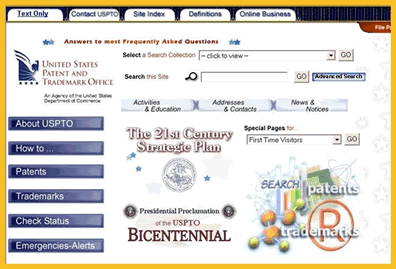 Figure 1. US Patent and Trademark Office Home Page
Figure 1. US Patent and Trademark Office Home Page- Left-Click on Patents to show the Patents Page.
- Left-Click, on SEARCH published patent applications to show the search page, Figure 2.
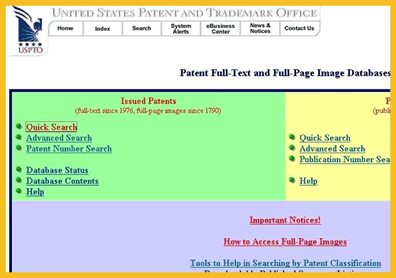
Figure 2. Patent Search Page
There are now three options available depending on what information you have at hand. Let us assume that you only know that there is probably 'copper' in the abstract and the inventor is called 'Okada.'
Quick Search
- Left-Click on Quick Search.
- Enter copper into the Term 1 box.
- Enter Abstract into Field 1 box by Left-Click on the down arrow at the side of the box, and selecting Abstract from the pop-up list.
- Similarly enter Okada into Term 2 box and Inventor Name into Field 2 box.
- Leave Selected Years box to cover period shown.
- The screen should look like Figure 3.
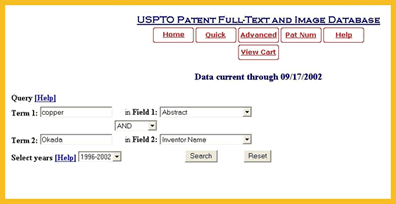 Figure 3. Quick Search Page Completed
Figure 3. Quick Search Page Completed- Left-Click on Search
The operators AND, OR and ANDNOT can be used in the Term boxes. For example entering copper AND laser in the Term 1 box and ABSTRACT in the Field 1 box will retrieve all documents with copper and laser in the abstract. Entering copper OR laser will retrieve documents with copper or laser in the abstract, and copper ANDNOT laser retrieves documents with copper but not laser in the abstract.
For more detailed information, Left-Click on Help on Figure 2 and Left-Click on How to Use the Boolean Search Page.
Any patents covering the data entered into boxes will now appear. In this case, only one is available, Figure 4.
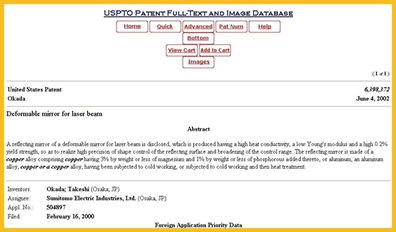 Figure 4. Okada Patent in Text Form
Figure 4. Okada Patent in Text FormThe patent is shown in full, in text form, with all of the patent information on filing date, published date, assignee, etc, but without figures. To obtain figures:
- Left-Click on Images at the top of the page to bring-up images of each of the published patent pages. Figure 5 shows the first page of the Okada patent.
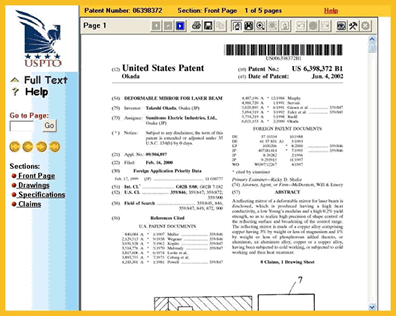 Figure 5. Page 1 of the Okada Patent
Figure 5. Page 1 of the Okada PatentIf the images do not appear, you may need the Adobe Acrobat 'plug-in' for your Web browser. Details of this and how to download one can be found by:
- Left-Click on Help on Figure 2.
- Left-Click on How to Access Patent Full-page Images.
Any or all of the pages can be printed out, including all drawings. A menu at the right hand side of the page helps find any part of the patent.
Advanced Search
Let's now look at a more general search using the Advanced Search Page brought up on screen as follows:
Left-Click on Advanced search on Figure 2
The format on this page is different from that on the Quick Search Page. The search is in the form of a Query. Assume that we wish to find all published patents with copper in the abstract that were published in the month of June 2002. Instead of filling in boxes, it is necessary to write out the query in full using the Field Codes listed. Enter the details as follows:
- Enter ABST/copper AND ISD/06/01/31->06/31/2002 in the Query box.
- Leave the Select Years box to include 2002, as in Figure 6.
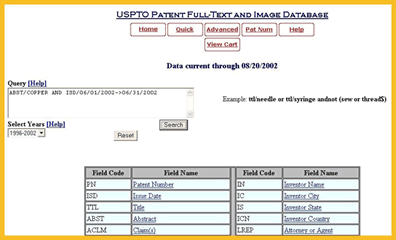 Figure 6. Advanced Patent Search Page Completed
Figure 6. Advanced Patent Search Page Completed- Left-Click on Search to produce the search results, Figure 7.
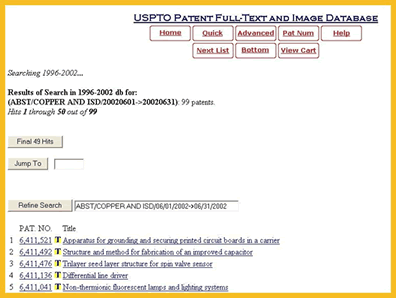 Figure 7. Advanced Patent Search Results Page
Figure 7. Advanced Patent Search Results PageThis shows there were 99 patents published during this period. To see an individual patent, Left-Click on the underlined patent number. The patent is presented in text form as before. To see the drawings, Left-Click on the Image box.
Note that the Field Code is immediately followed by a forward slash, /, followed by the query information. The operators AND, OR and ANDNOT may also be used, as with the Quick Search page.
For more detailed information, Left-Click on Help on Figure 2, and Left-Click on How to Use the Advanced Search Page.
Patent Number SearchIf you already know the patent number and wish to read the published patent:
- Left-Click on Patent Number Search on Figure 2.
- Enter the digit number in the Query box.
- Left-Click on Search
Searching So Far
You should now be able to search over a particular time period for patents relating to any aspect of the use of copper and its alloys and compounds. The process in not difficult, the problem is that there are still so many patents being awarded for new aspects and application of copper, searching will take time and patience. Narrow your search by inputting as much information as possible in order to cut down on the number of patents that finally have to be examined, one by one.
Worldwide Patents 
There is now a European Web site which will access patents from all over the world (including the USA) This is Espacenet , available in English, German and French, as Figure 8.
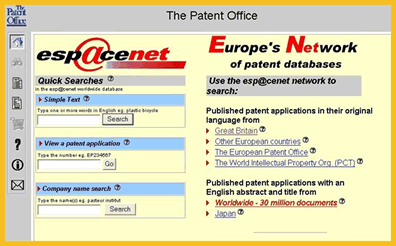 Figure 8. Esp@cenet Home Page
Figure 8. Esp@cenet Home PageThe list at the right hand side of the page shows there are 6 possible search databases, covering the world, and one should be chosen that will cover your query.
GB Patents 
The Great Britain data base will search through the last 24 months of published patents and is accessed by
- Left-Click on Great Britain to show Figure 9.
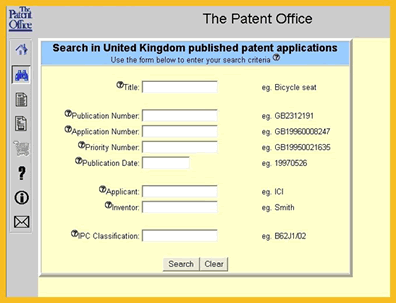 Figure 9. UK Published Patent Applications Search Page
Figure 9. UK Published Patent Applications Search PageDepending on the information you have, the boxes can be filled and a search started. The more information entered, the more restricted will be the results. At the front of each category there is a question mark in a circle. Left-Click on this symbol will bring-up the rules applicable to that category.
Inputting copper into Title, and 200206 into Publication Date will result in Figure 10 on Left-Click on Search.
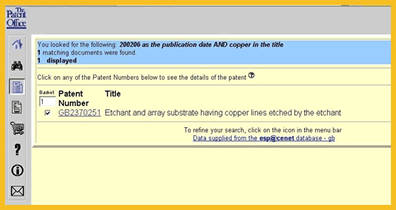 Figure 10. Search for GB Patents Published in June 2002 Completed
Figure 10. Search for GB Patents Published in June 2002 CompletedTo see patent listed Left-Click on the underlined patent number. The bibliography page will then be presented, Figure 11.
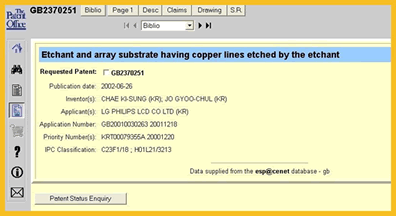 Figure 11. Bibliography Page of Patent GB2370251
Figure 11. Bibliography Page of Patent GB2370251To see the first page of the published patent Left-Click on Page 1 at the top of the screen, Figure 12.
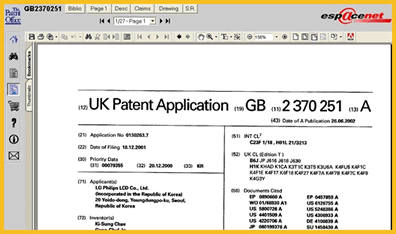 Figure 12. First Page of Patent GB 2370251
Figure 12. First Page of Patent GB 2370251Patents from other European Countries 
Patents from other European countries can be accessed by Left-Click on Other European Countries. The display is similar to the GB patent search page with an additional box requesting the country to be searched. A pull-down list is provided from which a country can be chosen. Only the past 24 months can be accessed. Note also that the search words entered must be in English. This is true for all of the listed databases.
European Patents
European patents covering several European countries, as opposed to patents for individual European countries are available by Left-Click on The European Patent Office. The past 24 months of published patents are available, and the search methodology is the same as for GB patents.
World Patents
World patents, covering several countries worldwide, are similarly accessed by Left-Click on The World Intellectual Property Org. Similar boxes can be filled in, and help is available fro each category listed. Search procedure is similar to GB and EP patents
Worldwide Searches
If a search has to be undertaken beyond the last 24 months a worldwide search is required by Left-Click on Worldwide. As a final example, suppose we search for all patents published in the month of June 2002, and compare it with the list produced earlier of US patents. Filling in the correct information results in Figure 13.
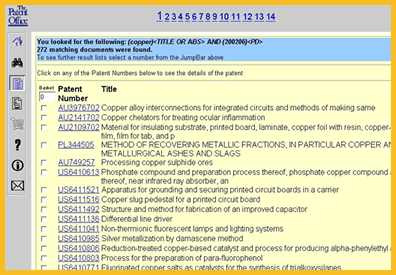 Figure 13. Patents Published Worldwide in June 2002 with Copper in the Title or Abstract
Figure 13. Patents Published Worldwide in June 2002 with Copper in the Title or AbstractThere are 272 patents listed worldwide in June 2002 involving copper, not bad for an ancient metal. On inspection, it will be seen that the U.S. patents previously found in the U.S. patent search for June have been included in this search also.
Japanese Patents 
The final database available will search the English language abstracts of Japanese patents published since 1980. The first page only is displayed.
Summary 
With a little patience patents can be searched for in almost any country using the scheme above. Only simple searching has been explained, and if considerable time is to be spent on patent retrieval it is advisable to read the relevant help documents. Much more can be achieved than simple patent finding. For example equivalent documents can be found in another country relating to a patent in the first country using the Priority Number(s). This can be important in determining in which countries an idea has been separately patented.
Well, the rest is up to you, but, be warned, there are lots of patents out there relating to copper, and that number is still growing rapidly.
Also in this Issue:
- Useful Service Life Evaluation Testing of Copper Tubing for Gas Distribution System in California
- Copper - Something New Under the Sun?
